A Guide to Lawn Weeds
Weeds are an ongoing and unsightly problem in lawns and will germinate at different times of the year when conditions are favourable for the species.
To keep on top of these throughout the growing season (spring to autumn) TopGrass will apply weed control which will be changed accordingly to tackle different weed types in relation to the time of year that they usually thrive.
Although treatments will control lawn weeds, airborne seeds will continue to establish themselves as well as those introduced by wildlife such as birds, and many will stay dormant until conditions allow germination to occur.
Most common weeds can be controlled but some (e.g. speedwell) are a lot tougher to eradicate completely.
TopGrass also utilises the environmentally responsible method of Integrated Pest Management (IPM) as promoted by the Amenity Forum and BASIS Lawn Assured. This means that all TopGrass weed control treatments are applied via the 'spot treatment' method wherever possible - meaning only the weeds present are treated instead of applying a 'blanket spray'. We also ensure we are promoting healthy soil and grass growth through our fertilisers and soil improver treatments, so there is less chance for weeds to compete with your healthy lawn.
Below, we have identified a few common weeds for you that you may recognise in your lawn.
Please use the hyperlinks below to go straight to the weed you wish to read about:
- The broadleaf plantain is a low growing weed that is identified through its dark-green broad leaves and its spike like flower protruding from its centre that known as the “rat’s tail” due to being scaly and it bears a likeness a tail.
- The broadleaf plantain flowers between June and October.
- Its leafage is tough and can survive through the winter.
- Broadleaf plantains can thrive in a wide range of soils from compacted to heavy, making it a weed that is prevalent in lawns.
- Due to the low-lying nature of the weed it cannot be removed through mowing.
- Can be managed with selective weed killers.
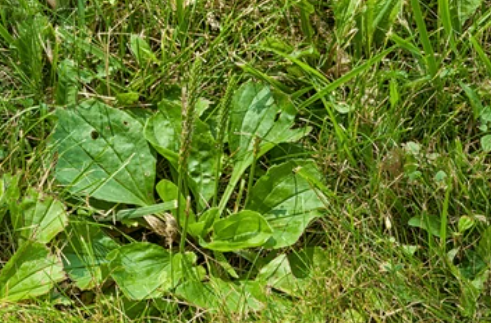
- Common Mouse-Ear is a variation of a chickweed that produces petite white flowers with white haired, green leaves. It forms as carpet-like matting over the lawn smothering grass.
- The weed blooms during the period of April to September.
- Can develop in a wide array of soil types and flourishes most successfully on nutrient deficient soils.
- The weed spreads through propagation of its seeds which it does by itself.
- Effective control with selective weed killers.
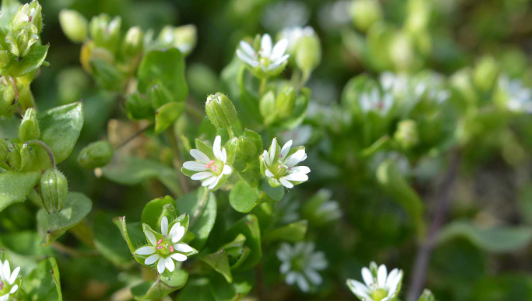
- The creeping buttercup is a common weed that is most recognisable through its sunny yellow flower head.
- They flower from May to September, with growth being most prominent during spring.
- It can be colloquially known as “The Devil”.
- Can become most problematic in saturated soils where the roots can embed deeply and form an extensively distributed rooting system of long runners.
- Prevention of creeping buttercups can be carried out in spring through using a wire-toothed rake to reveal the runner roots of the buttercup so that they can be mowed.
- Effective control with most weed killers.
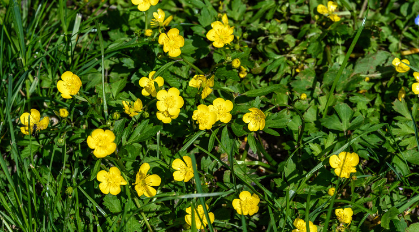
-
Cinquefoil is five leaves in French.
-
This weed has an invasive nature and produces up to 15 runners, each of which will have up to 20 rooting nodes capable of growing a deep tap root.
-
It is therefore important to tackle them as soon as possible to stop them spreading across the lawn.
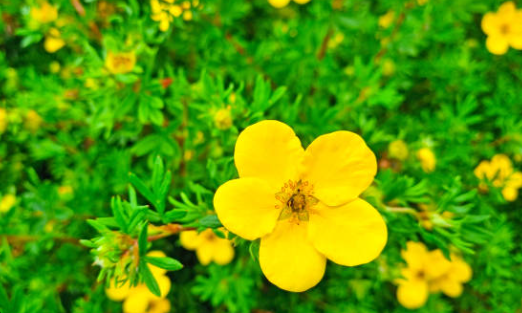
- Very common garden weed.
- The daisy can be easily identified by its yellow centre and surrounding white petals.
- It is a perennial weed that is very commonly found in most UK lawns.
- It can thrive in a wide range of soil variations.
- Prevention of Daisy growth can be achieved through maintaining a lush, thick lawn as daisies will be able to grow and prosper if there are sections of the lawn that are undernourished where the grass is sparser.
- Effective control with most weed killers.
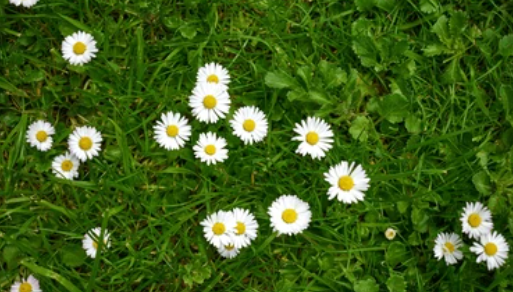
- The features of a dandelion are its bright and yellow flower head, dark green ribbed leaves, and its spherical seeding head which provide the source of its ability to easily spread its seed when dispersed by winds.
- It flowers from March to October.
- The dandelion is commonplace within lawns and is a difficult weed to remove through digging out due to their long tap roots and if a fragment of the root is left in the soil, the dandelion can regenerate.
- Additionally, the substantial number of seeds that can be dispersed by dandelions means that they can easily reproduce.
- The heads of the dandelions should be removed to prevent seed spread.
- Effective control with most weed killers.
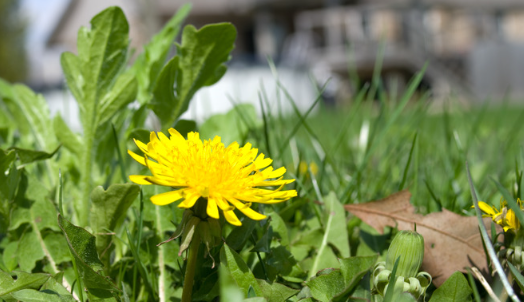
-
Field woodrush can be identified through its long, dark green leaves that are bordered by thin, white hairs, and its grass-like appearance.
-
The weed produces tightly packed flowers that resemble seed, that bloom during the months of March and April.
-
The weed propagates through its stems that spread out on the surface of the lawn.
-
This weed thrives most when conditions of the soil are particularly acidic.
-
If the lawn has accumulated dense layers of thatch and consequently has sparser areas of grass in the lawn as a result, this can promote field woodrush growth as the grass is not strong enough to impede it.
-
Field woodrush is highly resilient to most weedkillers but there are selected varieties that can tackle the weed in which repeated applications might be necessary.
-
Adding lime to the soil of your lawn can help to control field woodrush growth, ground limestone should be applied to the lawn after mowing has been concluded for the year in late autumn or early winter. This is to raise the ph of the lawns soil to a level that field woodrush cannot survive in.
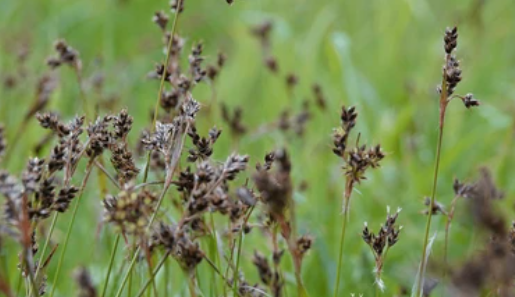
- The lesser celandine can be identified through its yellow, waxy flowers.
- They have a growing period between late February up until late April, in which it flowers during March or April.
- The weed sprouts from its root tubers and can reproduce and spread through bulbils that can be found at the point of intersection between the leaf and the stem.
- You should avoid digging out lesser celandines as this can have the adverse effect of spreading the weed due to the tubercles being disrupted and dispersed.
- Very resilient to most weed killers and can be difficult to control, requiring several applications.
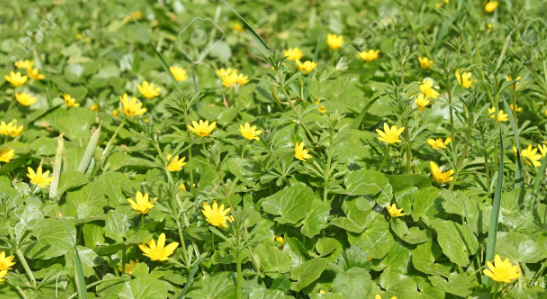
- The lesser trefoil is part of the clover family of weeds that is recognisable through its yellow suckling clover flower which blooms between the months of May to August.
- It is a creeping, low-growing weed that forms dense carpet-like patches of interwoven, wiry stems within the lawn.
- Its height means it can survive a short mow making it difficult to deal with.
- It can flourish on a wide range of soils, but it prospers most when soils are malnourished and have been deprived of essential nutrients.
- Can be managed with selective weed killers.
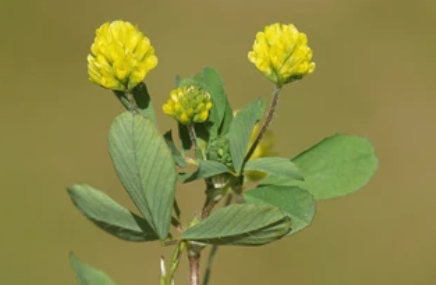
-
This is a creeping perennial weed with tiny round leaves.
-
It can re-grow from the smallest stem section and can soon get out of control.
-
This weed is very difficult to control in lawns.

- Selfheal is a vigorous, low growing weed that is perennial and is problematic within lawns due to competing with and impeding the growth of grass.
- Notable features are its short stems, oval-shaped, rich green leaves and its tube-like, dark violet flowers which flourish during June until November.
- The weed proliferates through the seeds found in its flowers which attract bees and butterflies.
- It can thrive even in poor quality soils making it a weed that can populate most lawns.
- It is difficult to remove through organically from lawns as it will be necessary to dig out the weed and replace the turf in order to remove the weed completely.
- Can be managed with selective weed killers.
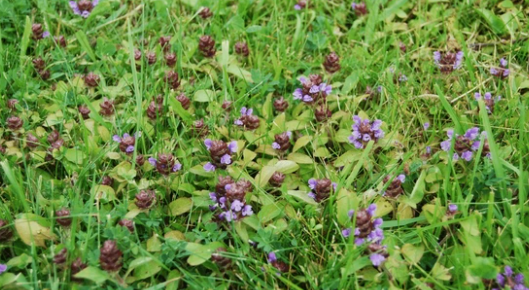
- Slender speedwell is a very intrusive, low-lying weed which grows in concentrated areas of the lawn during the period of early spring to early summer.
- The notable features of the weed are light blue flowers coupled with long stems.
- Speedwell becomes a problem due to its long-life span and its denseness means that it can blanket large areas of the lawn.
- Active from April to July
- Very resilient to most weed killers and can be difficult to control due to its leaves being small and hairy.
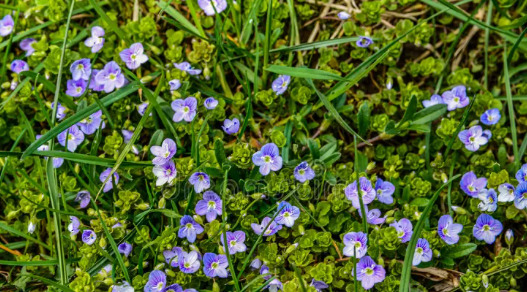
- The white clover can most easily be identified by its blooming white flower head and it broad green leaves.
- This weed can thrive amongst many soil types, but it most readily takes to alkaline soils that range from medium to heavy.
- They are a creeping weed meaning that they can reproduce through their roots.
- To control the spread of white clover, a well fertilised lawn can be essential in acting as a deterrent through stimulating grass growth.
- Flowers from May to October.
- Effective control with most weed killers.
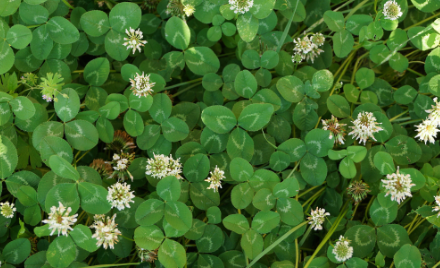
-
Weed grasses, when present in a lawn, are easily identifiable in appearance as they will contrast against the grass of the rest of the lawn. The texture of weed grasses will be rougher and coarser.
-
These types of grass can appear on the lawn in a variety of ways. Seeds can blow in from neighbouring fields, or they can be dropped by birds visiting the lawn. They could also have been laying dormant in the soil until conditions were suitable.
-
Weed grasses are tougher and more durable than finer lawn grasses, so they can prosper more so in the winter months as they can survive freezing temperatures which restrict the growth of more slender grass types.
-
Weed grasses are also more tolerant of drought conditions than finer grasses, due to a deeper root system.
-
If left alone, weed grasses in the lawn will also thrive and can start to take over the lawn and affect the overall look of the lawn. A lawn invaded by weed grasses will appear patchy, with some of the grass being of a different colour and texture to the rest of the lawn
-
Weed grasses can become particularly problematic where the lawn suffers from compaction, drought or excessive mowing.
-
Unfortunately, weedkillers that tackle weed grasses also kill off finer grasses, so TopGrass do not offer this service. This means that weed grasses need to be combatted through other methods that you can try such as:
-
Raking and/or scarifying any patches or clumps to remove as much of the invasive grass as possible.
-
Avoid mowing too short in order to keep a lush healthy lawn which does not allow weed grasses space to grow.
-
Overseed these areas to introduce newer, better quality grasses into the area.
-
Ensure all clippings are removed from the lawn to stop the spread of seedlings.
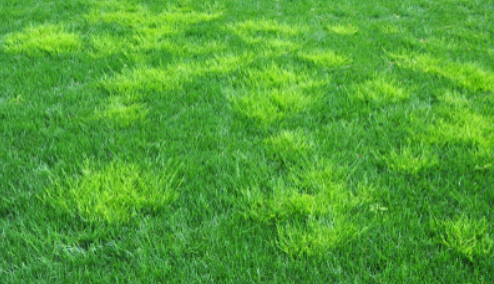
Need help identifying other weeds by flower colour?
White-flowered lawn weeds like daisies, yarrow and white clover can be just as invasive as yellow-flowered lawn weeds. Learn more about how these weeds can be identified and controlled.
Bright yellow flowering weeds are often spotted in early spring and summer. This guide helps you identify yellow bloomers like dandelions and creeping buttercup, and offers tips to control them.
Some lawn weeds bloom in shades of pink or purple and can be deceptively attractive. From speedwell to selfheal, find out how to spot and remove these colourful invaders.
Red-flowering weeds are not as common as your white or yellow flowering weeds, however, they can still pop up in your lawn. You can learn more about how to identify these red-flowered weeds and how to control them.
Blue-flowered weeds like germander speedwell can be stubborn and hard to control. Here are some tips on how you can identify and control blue-flowered weeds.